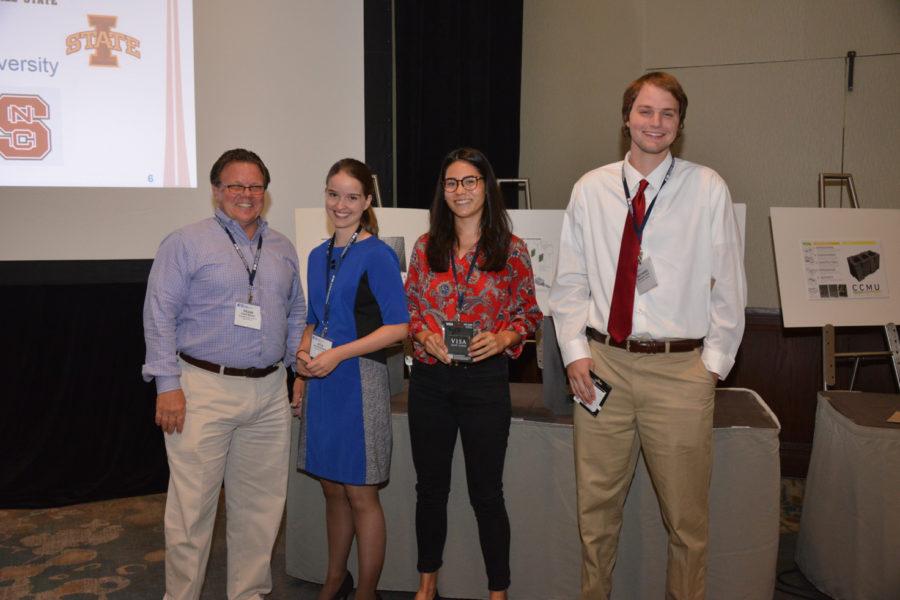Architecture students win a national competition
Ayla Hendrickson, Colleen De Matta and Nathaniel Jones at the NCMA finals in Toronto.
October 11, 2017
Three architecture students were one of three groups chosen as finalists for the National Concrete Masonry Association (NCMA) competition in Toronto.
After months of preparation, students Colleen De Matta, Ayla Hendrickson and Nathaniel Jones won the NCMA. Each year, Iowa State students participate in this competition.
Earning a winning title was shocking but exhilarating, said the team.
The students originally started this project as a class assignment and then presented the project on a local level. From there the team moved on to sending the project to Virginia where it was scored. This is when they waited for news on how they did and if they would move on.
“We were pretty surprised and humbled to be selected for the finalists of the national competition, very exciting,” Jones said.
Jones, De Matta and Hendrickson collaborated to come up with a project called “Amphi-Blocks” with which they aimed to prove the concept of taking a single mold of a block to potentially create an entire theatre completely of this block.
“We wanted to show versatility that concrete masonry provides in settings where it is not commonly thought to be utilized to its fullest potential,” Jones said.
De Matta and Hendrickson explained that the model blocks were laser cut to scale and spray painted to look like concrete.
Collaborating on this versatile project was not difficult for the students, although the tedious process to keep going back to refine the project and presentation was tough at times. De Matta and Hendrickson discussed how collaboration was simple because they were already familiar with one another.
“Right away at the beginning we came up with a very strong concept,” Jones said. “The concept part was easy but the refinement process of the visuals and presentation was the hard part.”
The students are used to working on larger scale projects versus focusing on a smaller scale or more specific detail.
“It was very interesting to just focus on the smallest detail possible and difficult because the smallest details are the ones we had to work on refining the most,” Jones said.
Usually when students work on projects they’re focusing on the bigger picture and dealing with an entire building structure not just one specific detail.
The team strived to critically think and work to meet the various industry standards and initial goal of being able to use the blocks acoustically. The blocks created were to show the concepts of absorbing, amplifying and reflecting sound for any sort of assembly place.
They originally started the process of this project in January and kept meeting throughout the summer to work and collaborate. The national convention in August was the end of the road after the much devoted time towards the project, which resulted in success.
Although they spent a great deal of time on the project in preparation for the national competition, they were able to take away new knowledge and experiences from the convention.
“I didn’t know there was such a passion for architectural materials. All the people we met were so passionate about their jobs,” De Matta said.
There was a lot to learn from this experience and practice on professionally marketing oneself and the product.
“This was my first introduction to professional life in a way. The importance of presentation and being professional was something that I had never really had to do before and this was a great opportunity to learn those skills,” Hendrickson said.
Jones explained how the overall experience gave them the benefit of understanding the industry better through constructive feedback and the friendly environment from the people in attendance. He described the experience as real world application into the field.
Students represented Iowa State’s design program at the convention and were confident in their presentation skills, which they believe is what set them apart from the other two competitors, Ball State University and North Carolina State University.
Iowa State’s team win was well earned and the audience at the convention agreed. After each team gave their presentation, audience members used a mobile app to vote for the team of their choice. The final scoring to determine the winning team was accumulated from previous scores in the competition and the audience’s votes.







